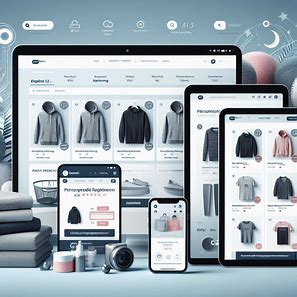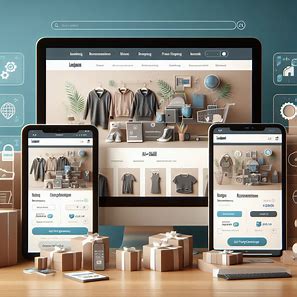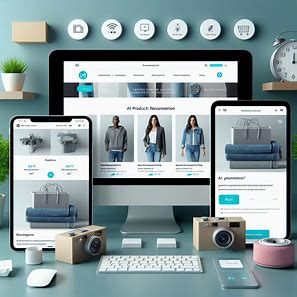
Introduction
User experience (UX) plays the most important role in determining whether your eCommerce business will succeed or not. Poorly optimized website (with lengthy page loads, bad navigation, or terribly constructed checkout), can result in high bounce rates and low conversion rates – a reason that the potential shoppers are ‘bounced off’ as they tend to not stay more than a few seconds on your site.
This case study reinforces these improvements in UX design, checkout process, and mobile experience for an eCommerce store that was underperforming.
✅ 35% increase in sales
✅ 50% reduction in cart abandonment rate
✅ 20% boost in customer retention
✅ 60% increase in mobile conversions
This article will show how analysis of the key challenges, solutions and the result around the reason why optimal UX is important for every eCommerce business.
Challenges Faced by the eCommerce Store
Facing several major issues critical to the eCommerce store’s Quality of Experience, or UX, the company had not yet solved problems that led to bad conversion rates and low revenue.
Slow Page Load Speed
The website speed is also important for customer retention. According to studies, half of visitors abandon a site which requires more than 3 seconds to load.
Users grew frustrated because the store’s average page load time was more than 5 seconds.
It was slowed down by really large, unoptimized images and lots of third party scripts, which all live_pairs does.
Furthermore, site speed was hurt by a lack of browser caching and slow server time.
Complicated Checkout Process
Checkout process is a leading reason for cart abandonment in ecommerce.
The checkout contained multiple pages and filled the customers with too many details to make it easy.
They had few payment options and the users would drop their carts.
No guest checkout option, users are obliged to create an account in order to checkout.

Poor Mobile Optimization
- Mobile responsiveness played a crucial role as almost 75% of the traffic came from mobile devices, and a lack thereof impacted the sales.
- The site also was difficult to navigate as it was not mobile friendly.
- Buttons and CTAs were too small for usability purposes.
- However, the mobile version of the checkout was not optimized for mobile and led to the abandonment of purchases.
Lack of Personalization
- Improving customer engagement and conversions are really dependent on personalization. However, this store struggled with:
- Non-tailored generic product recommendations.
- Despite this, there is no such option for customers to view the recently viewed items.
- Nothing based on the user’s behavior with AI driven personalized suggestions.
Limited Trust Signals
- Customers do not purchase items from sites they cannot trust or have no assurance that the site they are purchasing is secure.
- None of the product pages had any customer reviews on the website.
- They had no visible trust badges (SSL certificates, secure payment icons, etc.).
- The buyer’s confidence was shot down due to an unclear store’s return and refund policy.
UX Optimization Strategies Implemented
Our eCommerce UX specialists worked on the five core areas of improvement from which we can attack these issues.
Enhancing Website Speed & Performance
- The first priority was website speed optimization. The following strategies were applied:
- It is image compression to reduce the file size without lowering the quality.
- For the load times, they also implemented a Content Delivery Network (CDN) in order to speed them up worldwide.
- Reduced type of unneeded scripts using minimized JavaScript and CSS files.
- Also enabled the browser caching, i.e. the commonly used content stored locally for a short time.
Simplifying the Checkout Process
- Below are the changes we made to have a frictionless checkout experience:
- Opting for one step of checkout by shortening the number of steps.
- Integrated multiple payment gateways (Apple Pay, Google Pay, PayPal, Credit/Debit Cards, BNPL).
- Provided the functionality to implement guest checkout, whereby users could buy without creating an account.
- For returning customers also auto filled the shipping details.
Implementing a Mobile-First Design
Mobile optimization was critical to capturing mobile shoppers. We:
- Redesigned the layout to be fully responsive.
- Introduced a sticky navigation bar for quick access to categories and search.
- Improved mobile checkout UI, making buttons and CTAs larger for easier interaction.
- Added AMP (Accelerated Mobile Pages) to load pages faster on mobile devices.
Poor Mobile Optimization
Mobile responsiveness played a crucial role as almost 75% of the traffic came from mobile devices, and a lack thereof impacted the sales.
The site also was difficult to navigate as it was not mobile friendly.
Buttons and CTAs were too small for usability purposes.
However, the mobile version of the checkout was not optimized for mobile and led to the abandonment of purchases.
Lack of Personalization
Improving customer engagement and conversions are really dependent on personalization. However, this store struggled with:
Non-tailored generic product recommendations.
Despite this, there is no such option for customers to view the recently viewed items.
Nothing based on the user’s behavior with AI driven personalized suggestions.
Limited Trust Signals
Customers do not purchase items from sites they cannot trust or have no assurance that the site they are purchasing is secure.
None of the product pages had any customer reviews on the website.
They had no visible trust badges (SSL certificates, secure payment icons, etc.).
The buyer’s confidence was shot down due to an unclear store’s return and refund policy.

UX Optimization Strategies Implemented
Our eCommerce UX specialists worked on the five core areas of improvement from which we can attack these issues.
Enhancing Website Speed & Performance
The first priority was website speed optimization. The following strategies were applied:
It is image compression to reduce the file size without lowering the quality.
For the load times, they also implemented a Content Delivery Network (CDN) in order to speed them up worldwide.
Reduced type of unneeded scripts using minimized JavaScript and CSS files.
Also enabled the browser caching, i.e. the commonly used content stored locally for a short time.
Simplifying the Checkout Process
Below are the changes we made to have a frictionless checkout experience:
Opting for one step of checkout by shortening the number of steps.
Integrated multiple payment gateways (Apple Pay, Google Pay, PayPal, Credit/Debit Cards, BNPL).
Provided the functionality to implement guest checkout, whereby users could buy without creating an account.
For returning customers also auto filled the shipping details.
Why Choose SoftVisionist for Your eCommerce UX Needs?
At SoftVisionist.com, we help businesses build high-converting, user-friendly eCommerce stores through expert UX/UI design, website optimization, and conversion rate optimization strategies.
Our Services Include:
✔️ Speed Optimization – Lightning-fast websites that keep customers engaged.
✔️ User-Friendly Checkout Systems – Reducing cart abandonment.
✔️ Mobile-First, Responsive Designs – Seamless shopping across all devices.
✔️ AI-Driven Personalization – Increasing user engagement and conversions.
✔️ Trust-Building Strategies – Enhancing credibility with reviews, badges, and secure payment options.
🚀 Boost your eCommerce success with SoftVisionist.com! Contact us today to discuss how we can elevate your online store’s performance.



